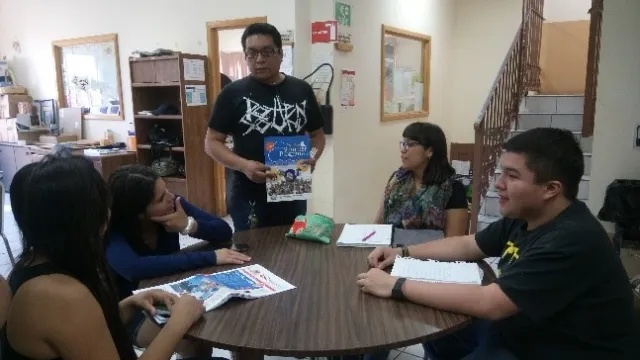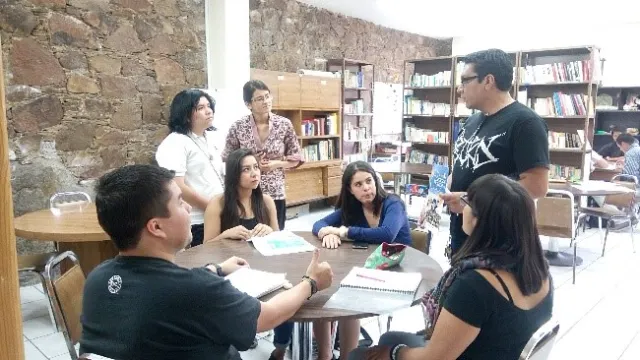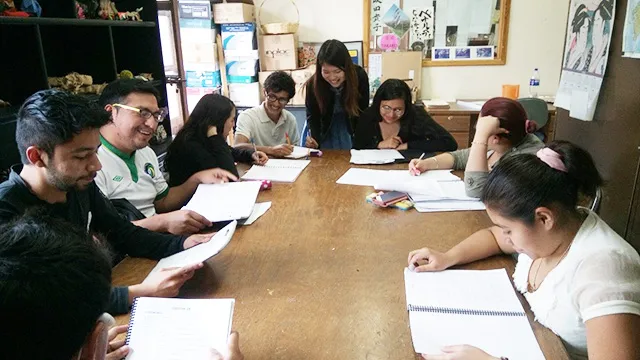2016 Activity Report
March Activity Report
March 2017
Global Japan Office Coordinator
Masako KANAZAWA
On Friday 3rd March, from 1:30pm the winter short term research students Tatsumi Kosuke, Nagasawa Mitsuki, Tokishi Chihiro, and Hisaie Higahsi gave us an introduction to TUFS. On the basis of the rehearsal last week, they made even more improvements to give an introduction on things such as student life at TUFS, the learning scene, club activities, and cultural festivals, while including their own photos.
Gathered to listen to the presentation were around 30 Japanese Language course students from elementary to advanced level. During their short, one month period of research in Mexico, the four Japanese students did their very best to answer the Mexican students’ questions in Spanish without a reading a script.
In the previous rehearsal, in order to respond to the many questions on issues related to the financial aspect of life in Japan, they also outlined the prices of the public transport near them. However, in light of the recent fall of the peso, the students recognise that study abroad applicants need to financially prepare long-term for life in Japan. Accordingly, as though they had once again recognised the importance of receiving a scholarship from any of the organisations that offer them, after the presentation, close to 10 students came by the GJO to ask about, aside from TUFS, what kind of organisations in Mexico offer support for studying overseas.
The Mexican students asked the TUFS students questions such as “why did you choose Mexico as your study abroad destination?” and “Which parts of Mexico do you like?”. While listening to the presentation, students of many different disciplines said that they overflowed with interest in studying at TUFS as a first step to their language study. Spurred on by this presentation, one student of international commerce submitted an application form for TUFS’s exchange programme. I very much hope for the realisation of this student’s study abroad, and that they will share their experience of Japan in front of everyone.
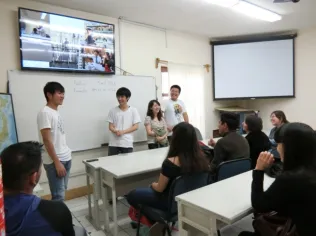
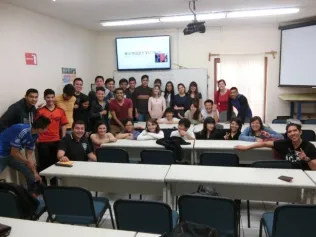
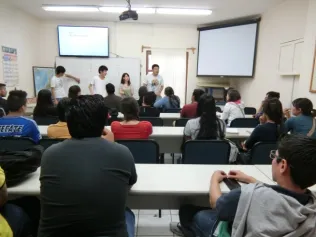
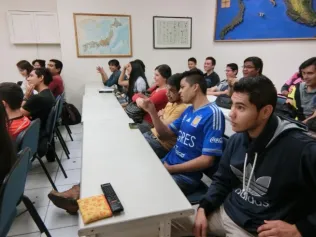
On 31st March, we received a lecture on ‘qi’ (気) and massage in Eastern medicine from Uekusa Takako, a registered nurse residing in Guanajuato. Around 15 students from this university attended. Nurse Takako has studied acupuncture, moxibustion and massage in Japan and China and has a history working in places including Bolivia and Kirgizstan as a member of JICA.
While introducing terms that use the character ‘気’ such as ‘元気’ (healthy), ‘気合’ (motivation), ‘病気’ (illness), and ‘気持ち’ (feeling), she gave an explanation of the flow of qi in the body. If the energy that enters the body is too much or too little, it can cause disorders. She asked each student for their estimates on the amount of energy that comes from the sun in each season, and on the damage and benefits that the sun’s energy has on the body.
Interest in Eastern medicine is strong among Mexican people, and the students listened enthusiastically. Things like ‘power stones’ are also popular with the students’ generation, so the desire to take in good qi also seemed to be strong.
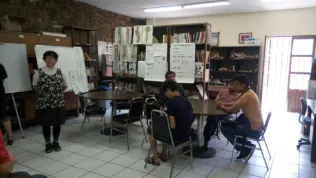
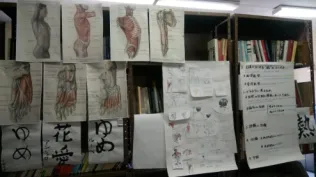
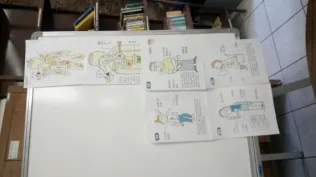
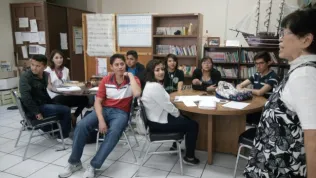
February Activity Report
February 2017
Global Japan Office Coordinator
Masako KANAZAWA
In February, we received the short-term study abroad students from TUFS. The four short-term study abroad students who visited the office were active in associating with the Mexican students, so I had them participate as volunteers in the conversation classes of the Japanese course at this university. In the group conversation class in the Japanese course’s third semester, I had them teach the contemporary ‘casual speech’ used by Japanese university students. At the same time, We were taught Spanish ‘modismos’ (modern words used by young people) by the Mexican students. Before they return to Japan in the first third of March, the study abroad students will be participating in the Japanese conversation classes two or three times a week.
At the GJO, I asked the same four students to give an introduction to TUFS, which they carried out on 28th February in the Japanese course’s intermediate level class. In front of the 20 Mexican students who participated, they gave an introduction to the university and what they were studying while showing photos of things like the scenery of the four seasons on campus and university festivals. Aside from that, they introduced some famous tourism spots in Tokyo such as Asakusa, Tokyo station, Tokyo government office, and Tokyo Skytree.
There were lots of questions from the students who were listening to the introductions, such as What kinds of subjects you can study at TUFS, whether there are student dormitories for foreign students, and which countries most of the foreign students come from.
I plan to have the same four students do another presentation introducing TUFS on 3rd March, so we took suggestions on points to improve from the Mexican students. Next time, students from all levels in the Japanese course will be able to attend. The Mexican students gave advice saying they would like to see things like more photos showing the four students’ everyday student life and maps showing the relative location of TUFS, as well as to know specifically what faculties and courses there are at TUFS, about famous places in the city, and about travel expenses.
The university is currently taking applications for the long-term foreign exchange programme with TUFS. At the GJO, along with widely advertising the next school introduction and calling for lots of students to join, I want to boost the exchange programme applications.
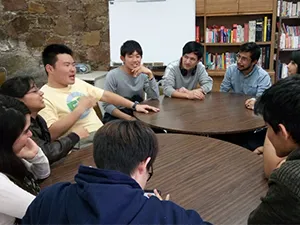
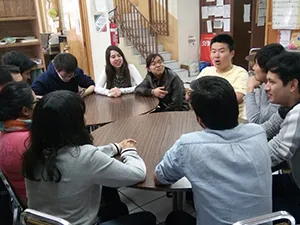
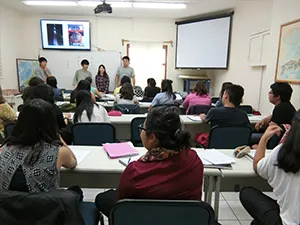
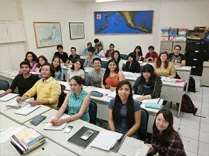
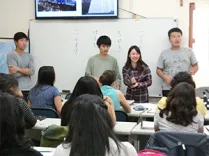
October Activity Report
October 2016
Global Japan Office Coordinator
Masako KANAZAWA
From 10th-13th October, acceptance for the ‘2016 Hiroshima (Mexico-Japan Exchange Program for the Strategic Global Partnership) Guanajuato cultural exchange project’ was held. The aim of this project is ‘Focusing on current trainees in Mexico, to carry out observation and cultural exchange in Guanajuato, deepening the understanding of Guanajuato and promoting cultural exchange in the younger generation through the practical use of municipality quotas for recommendations (aimed at Hiroshima prefecture residents) for the Mexico-Japan Exchange Program for the Strategic Global Partnership carried out by the Mexican and Japanese governments’, and was a request for the Global Japan Office.
Part of the agenda was a field trip to Mazda’s Mexico factory. Of the trainees, 10 University of Guanajuato students as well as Mexican university students who had experience of visiting Hiroshima took part. After being greeted by company president Mizutani and vice company president Okano, we received an explanation of the establishment of local subsidiaries from manager Suzuki. After riding the factory’s bus, we observed the painting and assembly processes. During the field trip, we listened to a simultaneous interpretation through earphones. As well as that of the workers of the manufacturing process, we were able to get a look up close of the interpreter’s job. After the trip had ended, we returned to the conference room, where the president and vice president took the students’ questions. There was a lively flood of questions, with students of the University of Guanajuato students asking numerous things such as what kind of human resources from Mexico are regarded as necessary to Japanese companies. Meanwhile, the university students with experience of visiting Hiroshima asked questions such as why hydrogen gas fuel is being exploited in Mazda’s Hiroshima factory but not in its Mexico factory.
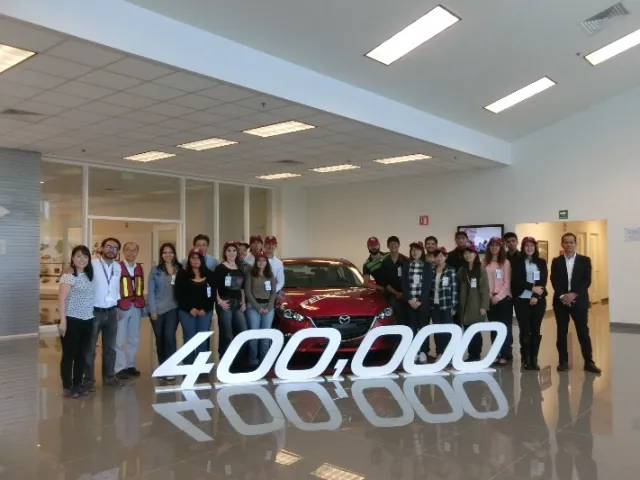
We also had the chance to visit the giant ‘mojiganga’ puppet studio run by artist and Guanajuato resident Mika Ishimatsu, and her ceramicist husband, Felipe. The two have been making mojiganga ever since they married 10 years ago after meeting at a mojiganga workshop. During the colonial period, in order to make known the majesty of the King of Spain to the citizens, a huge puppet was brought to the new continent, where it was used in a dance. However, with the cost cuts of recent years, along with the degradation in quality of the puppets, so too has the custom’s popularity declined. Mika and Felipe put great time and effort into creating the puppets, and sculptor Felipe pays special attention to the puppets’ facial expressions. On the day, they showed us a puppet of Mexico’s famous female artist Frida Kahlo out on the terrace, and allowed members of our trip the experience of puppeteering and dancing with it themselves. The puppets, which weigh between 12-15 kilos, are mounted upon the puppeteer’s shoulders, and balancing them takes some getting used to. Seeing a traditional art form which has been becoming rarer in recent years was a very valuable experience.
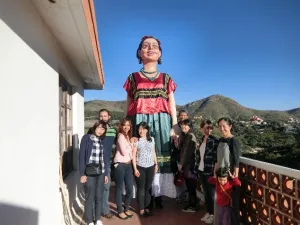
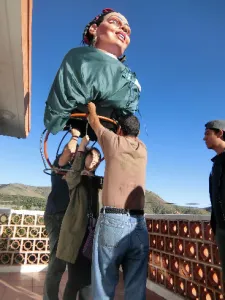
On 19th October, there was Japanese photography exhibition which focused on Shirakawa-gō. The photographer was Professor Octavio Hernandez, formerly of the University of Guanajuato’s architecture department. The exhibit showed Japan’s architecture from an architect’s point of view.
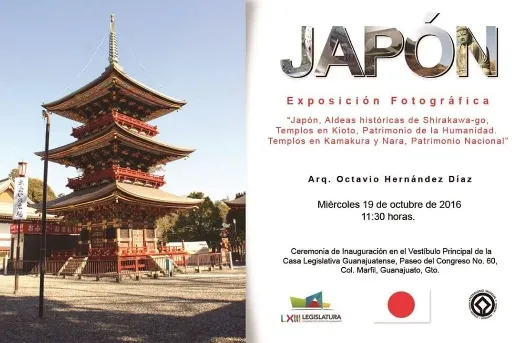
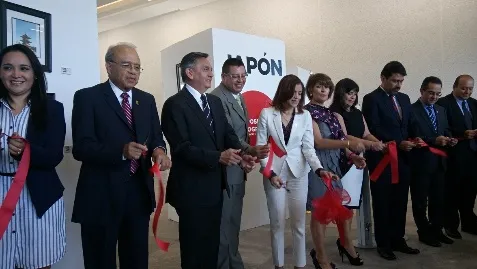
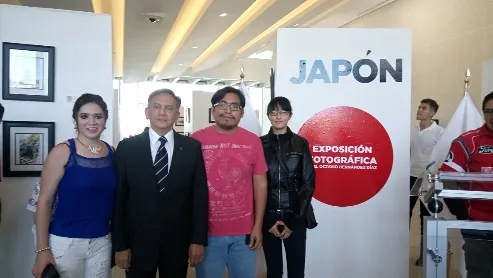
In October, Guanajuato City is lively with the annual international music festival Cervantino. This year’s guest country was Spain, and the domestic guest region was Torreon.
http://www.eluniversal.com.mx/especiales/cultura/2016/09/29/595101
September Activity Report
September 2016
Global Japan Office Coordinator
Masako KANAZAWA
From the 6th to the 8th of this month, the study abroad fair “Foro y Expo de Colaboración Académica Internacional” was held on the University of Guanajuato campus. I couldn’t attend on the 6th for various reasons, but I was able to visit on the afternoon of the 7th. There was a TUFS booth prepared on site, but since I had determined beforehand that I would be absent it was just a desk. Nevertheless, the international division management asked me if I could operate the booth even if it was just on the 8th, and so I decided to hurriedly prepare to open it the next day. At the dinner held on the evening of the 7th, I was able to get to know the people from all the large universities in Japan, the US, Canada and Germany who were participating in the fair, and I was able to explain the role of the Global Japan Office to many participants from Japan. On the 8th, at the TUFS booth I laid out the materials I had received on my visit to the university in February, and explained long-term study abroad as well as spring and winter term short-term study abroad programmes to students who came by. In just one day, I answered the questions of around 25 people. Many wanted to know about how much financial support was available for long-term study abroad programmes, but aside from that many asked about whether they could continue studying their current subjects at TUFS.
With regard to other activities, students from TUFS in the middle of their long-term study abroad have begun giving teaching support at intermediate level Japanese kids’ classes at the private language school Escuela Yinazi. Another long-term study abroad student has begun coaching at beginner’s level Japanese kids’ classes at the same school, starting this month. Because of the scarcity in opportunities for primary school pupils to attend Japanese classes in Guanajuato City, as well as the increased interest in Japanese that has followed the advancement of Japanese companies abroad, it seems that more and more parents want their children to learn Japanese from a young age. There is a rising trend in pupils attending intermediate level classes, and one can feel the enthusiasm for Japanese in the city.
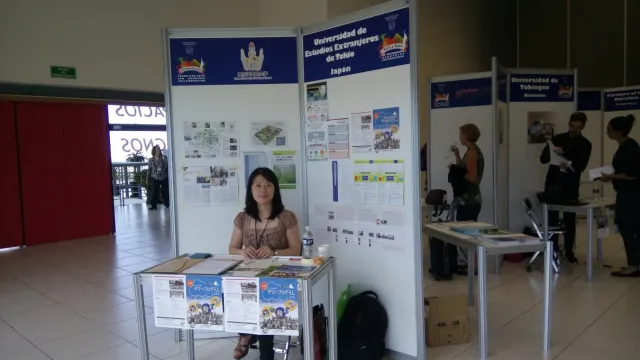
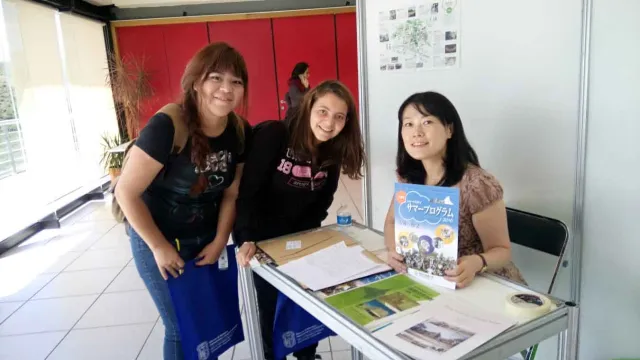
August Activity Report
August 2016
Global Japan Office Coordinator
Masako KANAZAWA
From the 15th of this month, the university’s autumn centre has begun. From last week, a seminar of 6 summer season short-term international students from TUFS also began. Every year, the university’s Japanese department receives help from Japanese international student volunteers with its conversation classes. They are put in charge of supplementing practice of conversation, vocabulary and so on that cannot be covered within lessons. From TUFS, 3 long-term study abroad students and 6 summer season short-term study abroad students took part.
From Monday the 22nd, the conversation classes began in earnest, and each volunteer acted as a guide for their group. During the class, the Mexican students got to know each other while exchanging self-introductions.
These conversation classes run by Japanese student volunteers are, for students of both countries, an ideal chance to make friends from abroad. Looking at past examples, students involved in these half-year exchanges have continued friendships even after returning to Japan. For the Japanese students, it becomes a motivation to one day return to Guanajuato, while for the Mexican students, it becomes a motivation to study in Japan long-term.
The TUFS foreign students were only here for the short period of two weeks, but during that time they kindly actively participated in the conversation classes. Graduate students Japanese education who took part in the short-term study abroad also taught kanji to the Mexican students in the Japanese classes in Centre 3.
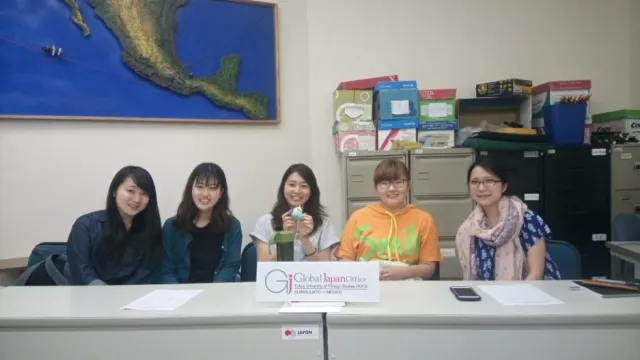
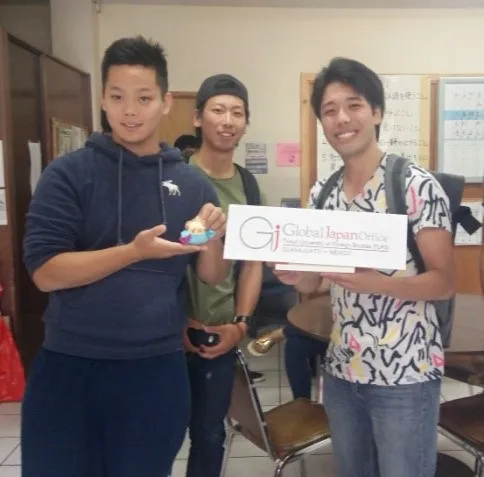
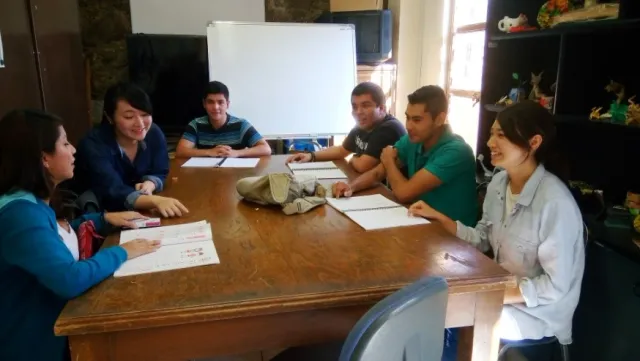
April Activity Report
April 2016
Global Japan Office Coordinator
Masako KANAZAWA
On the 11th of this month we had the visit from Mr. Yoji Muto, the State Minister and an exchange event was held with the Japanese students studying abroad here at University of Guanajuato.
Long term study abroad students from TUFS also participated. The Minister asked the Japanese students “What are you studying here in Mexico?”, “Why did you choose to come to Mexico?” and the Japanese students answered the questions after introducing themselves.
Accompanying the Minister was Mr. Suzuki, the Consul General residing in Guanajuato who by coincidence graduated from TUFS. Due to this the TUFS students also received encouragement from Mr. Suzuki as well. http://www.mofa.go.jp/mofaj/la_c/crb/page24_000592.html
This month of this academic year, we had multiple enquiries from students who were unable to participate in the “Short Stay Summer Program” regarding the program and on the 28th brought all the questions together and answered them.
Various questions were received such as fees which must be paid by the participants (food/travel expenses), the necessary requirements for acquiring a scholarship in Mexico, how to purchase flight tickets to Japan and other such questions.
